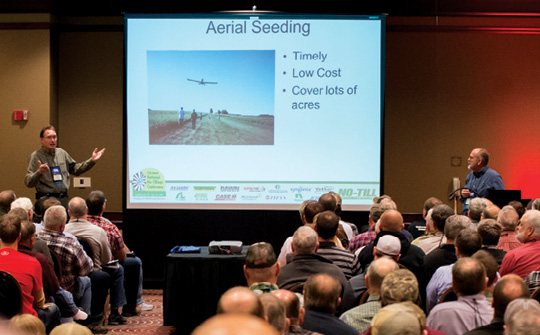
An article this week in No-Till Farmer, about a well-attended seminar at the recent National No-Till Conference. Click here for the whole article.
Beating Compaction
While radishes get a reputation for being a compaction buster, Hans Kok and Dan Towery say annual ryegrass is probably the No. 1 cover crop for resolving compaction.
Kok, coordinator of the Indiana Conservation Cropping Systems Initiative, says annual ryegrass does a better job in the long run of breaking up compaction layers because its fine root system is able to cover a larger area.
“Radishes have that fine root network too, but it’s usually that one tuber that goes through,” he explains.
On compacted glacial-till soil in Indiana, Towery, a no-till consultant with Ag Conservation Solutions in Lafayette, Ind., dug a hole in April where there was 9-inch-tall annual ryegrass. He found its roots went 51 inches deep.
One of the most extreme cases of compaction they saw was in southern Illinois on hard, fragipan soils. Kok says the growers there had 18 inches of topsoil, and their corn and soybean roots couldn’t go any deeper.
But 5 years of annual ryegrass started to break through that compaction layer, and now the growers have 3 feet of topsoil for their corn and soybeans, Kok says.
